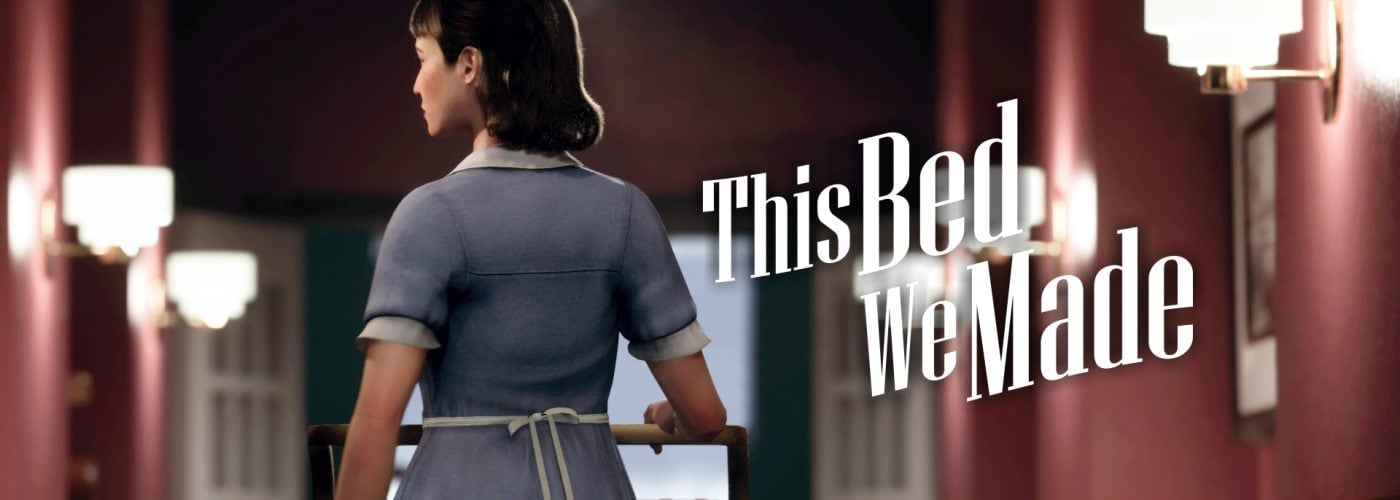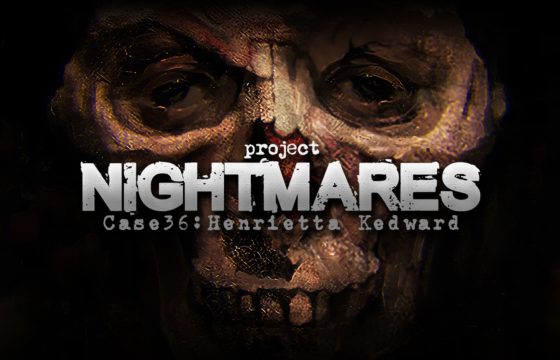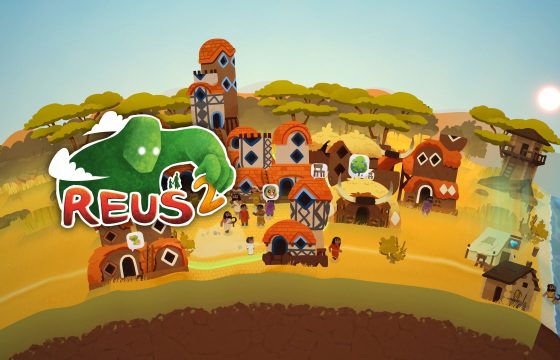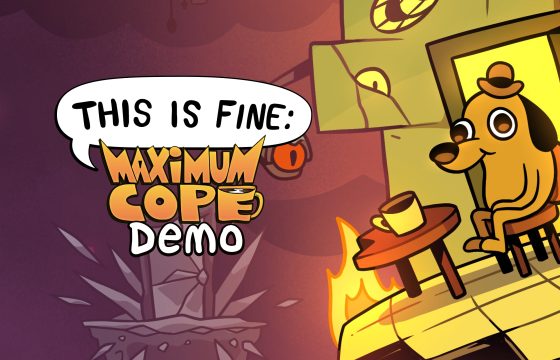A perfect blend of Neo-Noir and compelling storytelling

This Bed We Made is a third-person narrative mystery game, released on November 1, 2023, for PC and PlayStation 5. Despite its relatively short duration of 3 to 6 hours, the game offers replay value through its narrative variations.
Players take on the role of Sophie, a nosy chambermaid in a 1950s hotel, using her position to snoop through guests’ personal belongings.
Our story begins on February 17, 1958, when in Room 505, Sophie discovers developed photographs in the bathroom, used as a darkroom, depicting her rummaging through customers’ personal items.
Following this curious and unsettling discovery, our protagonist finds herself compelled to delve into the room’s objects to understand why she was the subject of such attention, leading to a series of revelations hinting at a dense and intriguing plot that Sophie must unravel.
Lowbirth Games
This Bed We Made is the captivating creation of Lowbirth Games, a video game studio located in Montreal, founded in 2019. The studio is currently comprised of a talented team of women, queer individuals, and others in alignment, with the shared goal of crafting diverse and innovative narratives for and by underrepresented individuals. After years of collaboration and hard work, the team’s genuine passion is expressed in every detail of This Bed We Made, making it a true labor of love.
It’s very apparent from This Bed We Made that this studio brings together successful authors and creatives with diverse perspectives. Industry experts with innovative newcomers boasting varied backgrounds form an excellent fusion of seasoned skills and fresh viewpoints, intending to challenge and transform existing norms.
The creativity, but above all, the quality of bringing their ideas to life, is also evident on their social media platforms. The countdown to the game’s launch, composed of numbers made from the most important and meaningful symbols in history, is a particularly beautiful idea.
The Taste for Mystery
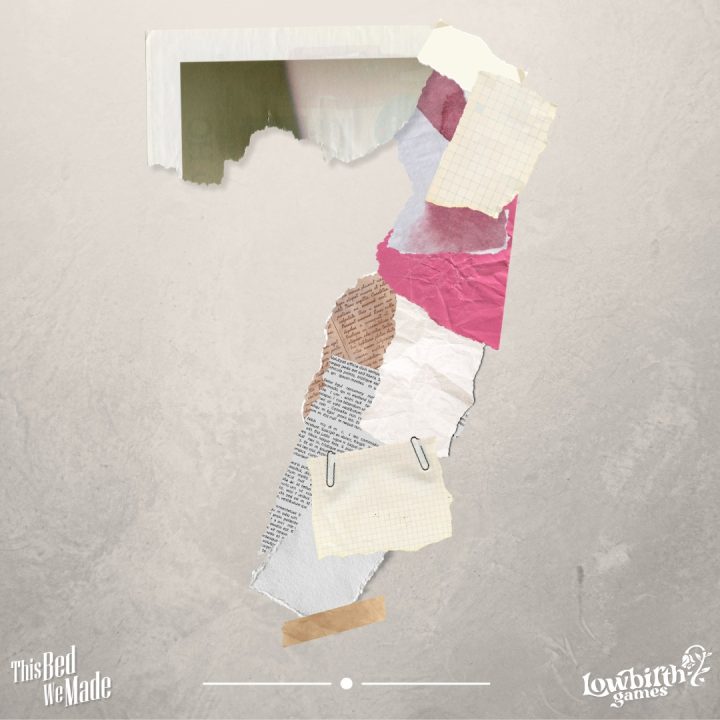
The number seven in the game launch countdown is composed of torn sheets, suggesting the idea of needing to be recomposed or deciphered, like in a puzzle. The use of a coded language is indeed one of the most prominent elements of gameplay.
The crime genre is highly appreciated in its various forms, extending to journalism. Our interest in mystery is often fueled by the sensation of being able to virtually participate in investigations, and what better way to do that than with a video game?
Puzzles, clues, and coded messages stimulate our intellect but, above all, immerse us engagingly in the intricacies of the plot.
To discover more about the dynamics that seemingly connect some hotel guests, we’ll have to mind our own business a bit, eventually learning about private matters to the extent of becoming real secrets.
Clue After Clue
The number six in the countdown consists of a series of film rolls, expressing investigations and espionage. The photographs also serve as the prologue that initiates the story, a tale woven with subterfuge and mysteries, perfectly symbolized by the keys composing the number five in the countdown.


The key serves as the stratagem to access secrets, partially locked away in safes, of which, naturally, we will need to discover the combination.
But our investigation doesn’t stop at room 505 because, from there, a series of connections emerge, leading us to upheave other rooms, as well as the lockers of colleagues, ultimately piecing together a story of love and death, akin to a perfect romantic tragedy where an impossible relationship culminates in murder.
The Female Figure
Set in the 1950s, female characters ran the risk of being portrayed in a stereotypical manner, but this is not the case. The reconstruction of clothing and even the way of expressing themselves is undoubtedly in line with the period, but these women, central to the events, can certainly be defined as unconventional by the standards of that time.
We have Sophie, our protagonist, who, with humility and calmness, nonetheless demonstrates initiative and courage, to the point of risking her own job position and more.
The rebellious spirit of her colleague Beth, on the other hand, is evident from the start, through her boldness, inclination to take charge, and a tendency to follow her own rules. She serves as support and encouragement to Sophie, who is initially more hesitant to continue the investigations.


But there are two other important and fundamental female figures, the two figures that gave life to the web of relationships and events. I won’t reveal who they are to avoid spoilers.
Male characters are portrayed very differently from female ones. We have the hotel director, Bernard, and the colleague, Andrew. The former has a boastful demeanor, is arrogant, and is likely profoundly sexist.
Andrew, on the contrary, has a mild, almost submissive attitude, and with the right choices, he too, along with Beth, can be a valuable ally. However, he doesn’t have the same charisma and initiative as his female colleagues.
A Well-Crafted Setting
The first thing that becomes apparent upon entering the set of This Bed We Made is the atmosphere. The warmth of the hotel contrasts with the snowstorm raging outside. This juxtaposition puts us in a reassuring state, thanks in part to the friendly relationships among colleagues.
It almost gives the impression of being in a familiar environment, and there’s no sense of the need to be stuck at work due to the bad weather. The hotel manager quarreling with his wife almost takes on the role of a paternal figure who scolds his employees as if they were his children, and in turn, they interact with each other with a camaraderie reminiscent of siblings.
This strong sense of patriarchy is evidently critiqued through details such as flyers and letters revealing the treatment of women and homosexuals. The focus is on highlighting an issue that, by the 1950s, should have been overcome, but we all know very well that it’s not the case.
Therefore, Lowbirth Games has taken on the task of drawing attention to an urgently relevant theme and does so with subtlety, almost discretion, choosing a historical context to compare with the present, where there don’t seem to be too many differences.
The provocative intent is tempered by tones that are nonetheless sober and objective, with no intention of causing offense but rather prompting reflection.

Variation of Endings
Being a multiple-choice graphic adventure, This Bed We Made has multiple endings, clearly based on the choices made during the game. The endings are also influenced by the degree of clue resolution and the completeness of the environment exploration.
One of the choices that can be encountered is that of the Acolyte, which can be Beth or Andrew. Depending on which relationship has been better developed, you will get one or the other.
The game features nine variations of endings. Six of them depend on detective skills, and three on maid skills. In any case, the ability to play it multiple times is absolutely positive, as it is enjoyable in aesthetics, dialogues, and puzzle-solving.
Conclusions
This Bed We Made has several strengths. In my opinion, the most interesting ones are the setting and the script. The presence of a well-crafted setting, where a clear and distinct atmosphere is perceived, with consistent and carefully crafted graphics, in addition to non-trivial dialogues and psychological dynamics, makes This Bed We Made noteworthy.
It is also notable for other aspects, such as the attention given to the LGBTQ theme, done with elegance but firmness.
Another merit that I feel compelled to add is related to the voice acting and the sound department in general. Excellent soundtrack, very Hitchcockian.
If I have to find a couple of personal nitpicks, I would say it’s a bit short and not always engaging in dynamics. However, being very well-written, it is satisfying and never boring.
This Bed We Made
PRO
- Well-crafted Setting
- Captivating Atmosphere
- Excellent Script
- High-Quality Dialogues and Soundtrack
CON
- Duration might be a bit short
- Dynamics not always engaging

